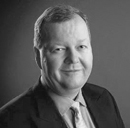MY expectation for the March 16 governing council meeting in the European Central Bank (ECB) is clear: interest rates will be raised by 50 basis points, and it will be no surprise either. If one listens to the statements of various members of council, as well as the guidance that ECB President Christine Lagarde has given, then an interest rate increase should be expected. The interesting question is what the ECB chooses to do in the following months.
In my view, the most likely outcome of the press conference on March 16 is that it will leave financial markets in a kind of indecisive no man's land, probably with an indication that the arrow is still pointing up for the interest rate direction at the ECB but no more than that either.
Continue reading with one of these options:
Ad-free access
P 80 per month
(billed annually at P 960)
- Unlimited ad-free access to website articles
- Limited offer: Subscribe today and get digital edition access for free (accessible with up to 3 devices)


